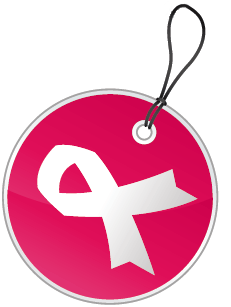FAR TOO MANY families know the worry, fear, and anguish when a friend, family member or loved one receives a cancer diagnosis. Some people reading this article may have been diagnosed with cancer themselves. Other than skin cancer, breast cancer is the most common cancer among American women. This is why taking a month to raise awareness of breast cancer is important. While most people know about breast cancer, many still fail to follow the necessary practices to detect the disease early in its course.
Here are some “Fast Facts” about breast cancer from the Centers for Disease Control:
• Each year in the United States, more than 200,000 women are diagnosed with breast cancer and more than 40,000 women die from the disease.
• Men also get breast cancer, but it is not very common. Each year in the United States, about 2,000 men are diagnosed with breast cancer and about 400 men die from the disease.
• Most breast cancers are found in women who are 50 years old or older, but breast cancer also affects younger women. About 11 percent of all new cases of breast cancer in the United States are found in women younger than 45 years of age.
• Black women have the highest breast cancer death rates of all racial and ethnic groups, and are 40 percent more likely to die of breast cancer than white women. (1)
The earlier that breast cancer is detected, the easier it is to treat and the better the outcome. So, it is important to know the signs and symptoms. While some people have no symptoms at all, others might notice a change in how the breast or nipple feels.
• Nipple tenderness or a lump or thickening in or near the breast or underarm area
• A change in the skin texture or an enlargement of pores in the skin of the breast (some describe this as similar to an orange peel’s texture)
• A lump in the breast (It’s important to remember that all lumps should be investigated by a healthcare professional, but not all lumps are cancerous.)
Another sign could be a change in the appearance in the breast or nipple.
• Any unexplained change in the size or shape of the breast.
• Dimpling anywhere on the breast.
• Unexplained swelling of the breast (especially if on one side only).
• Unexplained shrinkage of the breast (especially if on one side only).
• Recent asymmetry of the breasts (Although it is common for women to have one breast that is slightly larger than the other, if the onset of asymmetry is recent, it should be checked).
• Nipple that is turned slightly inward or inverted
• Skin of the breast, areola, or nipple that becomes scaly, red, or swollen or may have ridges or pitting resembling the skin of an orange. (2)
Practicing regular monthly self-exams is a great place to start for men and women of all ages. If you are a woman between 50 and 74 years old, the CDC recommends getting a mammogram screening every two years. If you are 40 to 49 years old, talk to your doctor about when to start and how often to get a screening mammogram. If you have any questions, be sure to speak with your primary care provider about how to perform these exams and additional precautions you should consider. There is no better time than the present to begin habits that can help save a life. For more information on breast cancer, visit http://www.cdc.gov/cancer/breast/.
(1) Centers for Disease Control, 9/17/15. http://www.cdc.gov/cancer/dcpc/resources/features/BreastCancerAwareness/index.htm
(2) National Breast Cancer Foundation, Inc., 9/17/15. http://www.nationalbreastcancer.org/breast-cancer-symptoms-and-signs
CREDIT
article by JOY JACKSON, MD
ABOUT THE AUTHOR: Dr. Joy Jackson, an internal medicine physician, serves the community as director of the Florida Department of Health in Polk County (FDOH-Polk) and as a Polk County Medical Association member. For more information about FDOH-Polk, visit www.mypolkhealth.net.
